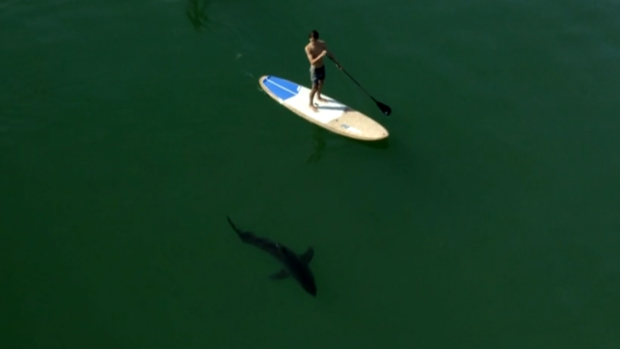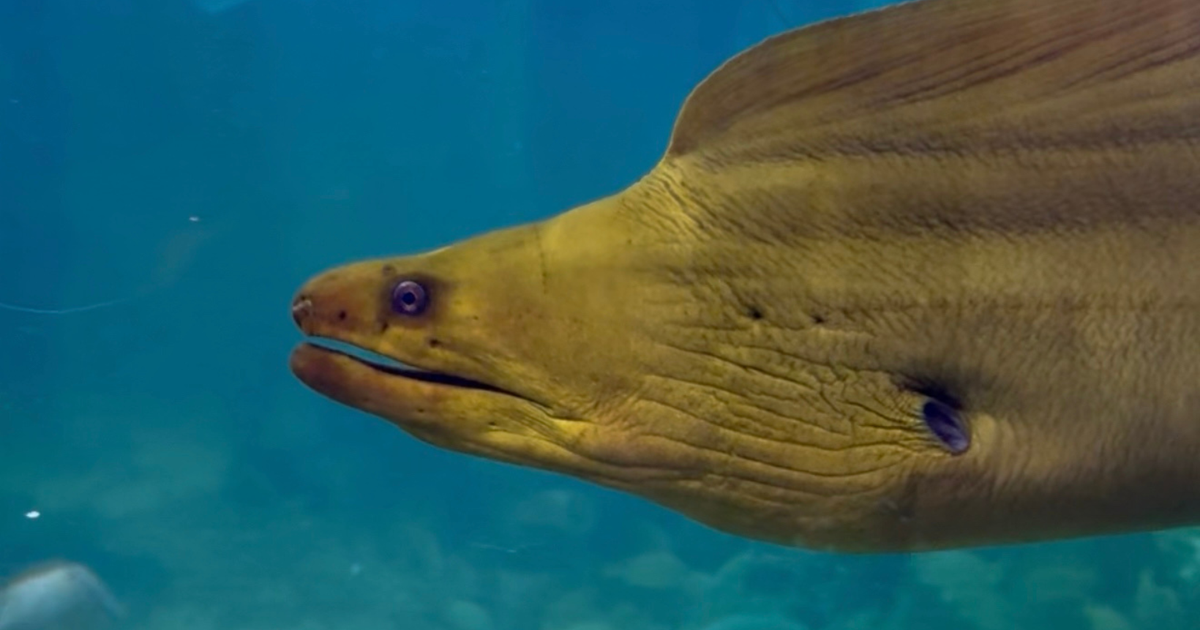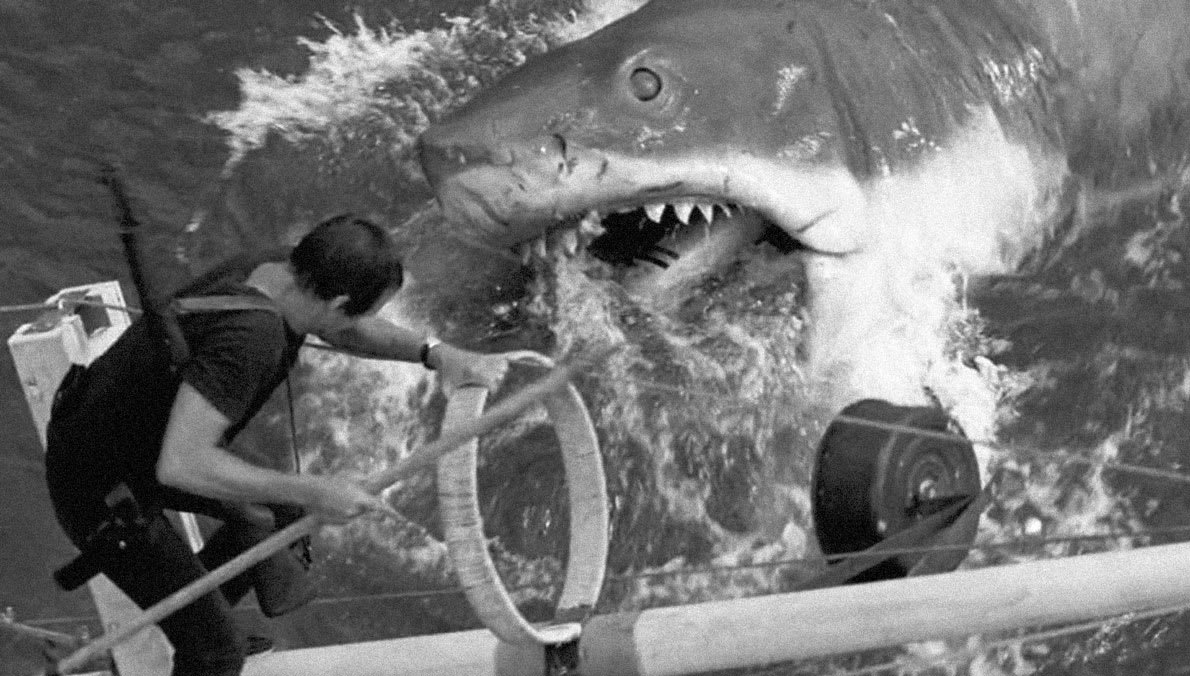California drone video shows growing number of great white sharks swimming near people
New drone images taken near Los Angeles show an increasing number of juvenile great white sharks swimming among people.
The population of these animals is exploding off the coasts of Southern California beaches — and they appear much calmer about their new neighbors than humans have historically felt about sharks.
Wedding photographer Carlos Gauna started capturing stunning images of the massive creatures off the beach when the coronavirus pandemic dried up his business.
"Almost every time I see an interaction with a human and a shark, my heart does pound. We've all been conditioned ever since 'Jaws' came out to fear that interaction," Gauna said.
Far from "Jaws," new videos show many encounters, including a large shark calmly cruising past a lineup of surfers.
Another approaches a family, and a swimmer is approaching a third.
All of the sharks are seemingly uninterested in the people nearby.
"Despite the fact that people are out there thrashing around and their arms are hanging off boards and legs are hanging off boards, sharks just ignore it," said Chris Lowe, director of the Shark Lab at Cal State Long Beach.
He said we "don't really know" why they don't see us as food, though.
"First of all, we're not close to being on the menu," he said.
Most of the sharks spotted in the area are juveniles — despite their size, the great whites are only up to about 6 years old and very inexperienced hunters.
Lowe's team showed CBS News where the sharks use the warm coastal water as a nursery.
Because sharks are "completely on their own" when born, the researcher explained, "The safest place for them to be is in shallow water. They have to learn to feed on what's there, and the number one thing that's there are stingrays."
"In fact, we've been able to document sharks recognizing that somebody is nearby," he said. "So they know the sounds of a person swimming and surfing."
Lowe believes the sharks have learned that humans aren't a threat.
However, he warns that could change if people start going after them.
"They're wild animals. And if they feel threatened, they will defend themselves," he said.
In 2019 the Coast Guard had to airlift a surfer who was bitten by a shark off Santa Rosa Island. But Lowe says unprovoked great white shark attacks in his area are extremely rare.
That does not necessarily apply to the sharks on the East Coast.
"There we have adults that are there to feed on seals, and those seals are sharing the beach with people. So that's a very different situation," Lowe said. "Even in Northern California…I'd be a lot more hesitant about getting in the water."
Lowe's team is working to eventually predict the conditions that would lead to encounters with people.
He hopes in five years' time there will be both a rip current report and a shark report.
CBS News' Carter Evans took a paddleboard to the coast of Santa Barbara, and found Lowe's observations about swimmers' close encounters are true.
"I can almost grab its dorsal fin. It's right underneath me," he said, just feet above from a massive, unconcerned shark.
The Shark Lab says the videos and Evans' firsthand account are just more examples that beachgoers and great white sharks can coexist — at least in Southern California.








